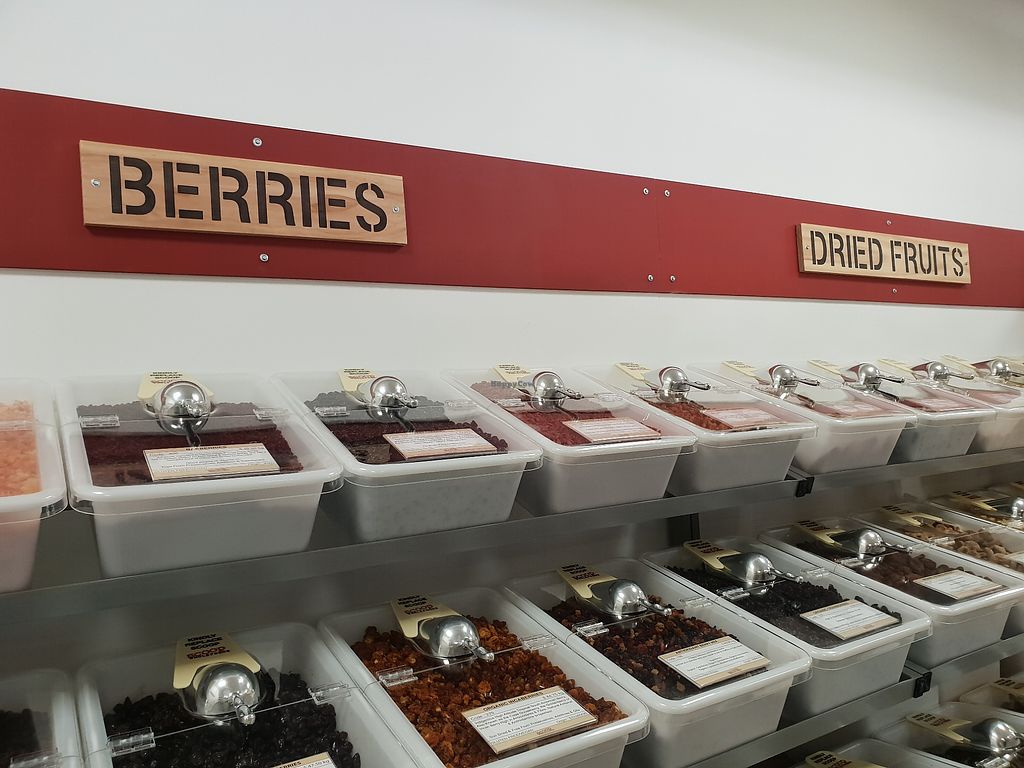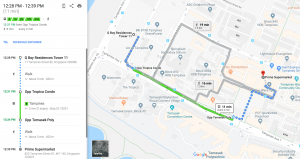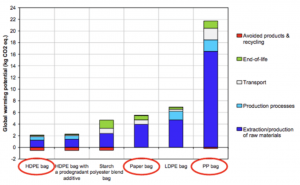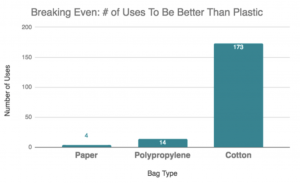Food (Packaging, Sourcing)
Consume locally grown products
It is hard to define the term ‘local’, so depending on whom you ask, local may be defined by the distance to market, staying within state or city borders, or by other regional boundaries. In case of Singapore, it is unusual since Singapore hardly grow crops. Thus, we think foods imported from Malaysia can be also considered local(distance from Singapore to Malaysia is approximately 320.9 miles).
- Why is it better for the environment to buy locally grown products?
First of all, locally grown products are beneficial for your health. It is often pesticide free. Many local food producers choose to use organic and natural pest repellants to preserve the health of the food they distribute. And it’s Preservative Free. Locally grown food doesn’t require long trips to be transported across the country until they reach their final destination. For this reason, food doesn’t need to have any preservatives and other chemicals added to it. Also, it Improves Food Safety. Food safety is another growing concern, especially for families with young children and seniors. Food safety refers to a food’s level of contamination risk. With imported food, it can pass through several different hands before it reaches your kitchen, increasing the chance of contamination.
It is also better for the environment. It reduces Food Miles. Imported food is shipped sometimes hundreds or thousands of miles to arrive at the supermarket.“Food miles” is a term used to describe the distance that food has traveled. The more food miles accumulated during food transportation, the more fossil fuels that are consumed. This transportation causes greater carbon emissions. Reducing food miles helps alleviate our dependence on fossil fuels, reduce air pollution and cut back on greenhouse gas emissions.
- Then, where can you buy locally grown food?
Farmers market in Singapore
Loewen Gardens Farmers Market (75E Loewen Road Singapore 248844)
When: Every second Saturday of the month (Usually)
Time: 9am – 2pm
Grocery stores that sells locally grown products
1)Fair price(Blk, 872C Tampines Street 86, #02-01, 523872)
10 mins by walk
2)Prime Supermarket (823 Tampines street 81,#01-160, Singapore 520823)
11 mins by bus+walk
Instead of using disposable plastic bags, use reusable shopping bags.
- What types of shopping bags are there?
Disposable Bags
Basic Plastic (HDPE) – High Density Polyethylene – this is the lightweight single-use plastic bags you find at almost every grocery store.
Paper – Paper bags are less common than plastic bags but can still be found in some stores. They are the original “disposable” bag and are intended for single use.
Reusable bags
Cotton – These bags are often referred to as “totes”. They are woven from cotton and are build to be reused many times.
Polypropylene – This is one of the most common types of reusable bags now being distributed by retailers. Made from a more durable plastic than the HDPE bag, this reusable bag is build to be reused many times and often has a rigid insert in the bottom for added strength.
- What impact do disposable bags have on the environment and all lives on the earth?
Single-use disposable plastic bags are suffocating the planet, with 60,000 plastic bags being consumed in the U.S. every 5 seconds. They are made using non-renewable resources, either petroleum or natural gas. They take huge amounts of energy to manufacture, transport across the country, and recycle. They don’t break down in landfill sites, but over time they release dangerous chemicals. They’re incredibly difficult to recycle, causing problems such as blocking the sorting equipment used by most recycling facilities. That’s not all. They contribute to a widespread, global litter problem. The litter caused by plastic bag use is not limited to land. Plastic bags contribute heavily to the formation of the Great Pacific Garbage Patch, which is estimated to be twice the size of Hawaii. Most of the Earth’s wildlife is in the sea are also at risk of ingestion due to plastic bag flotsam. Floating plastic bags are often mistaken for jellyfish by marine animals, such as sea turtles which are threatened with becoming endangered due to mass ingestion of plastics. because the plastic cannot be digested, it remains in the sea long after the turtle has perished and decayed because of it. In addition to this, as the plastic degrades into smaller pieces it is also eaten by aquatic organisms, small fish and jellyfish. Plastic waste therefore enters the food chain in increasing concentrations as larger fish feed on smaller ones and other animals feed on the fish – including human beings. Moreover, plastic bags pose serious health hazards to populations as over time they leach toxic chemicals into drinking water supplies.
- There are reusable bags made from many different materials. Which one is better for the environment?
The environmental impact of 1 bag when looking at the total life.
Note: Cotton bags are not included in this graph. The study states that the global warming potential of cotton bags is more than 10 times the impact of any other bag.
Reusable bags require more material and more energy input than disposable bags which gives them a bigger environmental footprint when comparing them 1 to 1. For 1 bag we can see that the standard disposable bags (HDPE) has the lowest impact. But since the average person uses hundreds of plastic bags every year, we have to consider how many plastic or paper bags you displace by using a reusable bag.
When does a reusable bag become more environmentally friendly than a disposable bag?
To be more eco-friendly than a disposable plastic bag you would need to use these alternatives this many times:
Paper Bags: 4 Times
Polypropylenes: 14 Times
Cotton: 173 Times
Clearly, the more you reuse a bag, the lower its environmental impact. Thus, environmental impact of each type of bag depends on your usage. Generally, polypropylene bags are a good choice when considering a reusable alternative. After only 14 uses this bag is already more eco friendly than plastic bags. For plastic bags you already have, give them to thrift stores since they are often in need of clean plastic bags.
Clothing (Sustainable Production)
Did you know that by being unaware and careless with your shopping, you have contributed to global warming?
How much water in (approx)
- a car- 39,090 gallons
- a pair of jeans- 1,800 gallons
- cotton T-shirt- 400 gallons
- a barrel of beer- 1,500 gallons
- a latte- 53 gallons
If you are surprised by the amount of water being used to make things that we use in daily life, don’t worry, there are solutions to this. Many brands have adapted to become more eco-friendly. Here are some of the brands you can now buy from without harming the planet.
- Adidas
- United Colors of Benetton
- Burberry
- C&A
- Esprit
- G-Star Raw
- H&M
- Inditex (includes Zara
- Levi Strauss & Co
- Limited Brand
- Mango
- Marks & Spencer
- Primark
- Puma
- Uniqlo (Fast Retailing)
- Valentino
Flying Hurts The Planet!
Many people fly all over the world for work, family and more. For most, flying is inevitable. Did you know that the fumes that aircrafts release cause more harm than any other form of transport because their emissions are released directly into the upper part of the atmosphere? These fumes are a huge part of CFC gases that destroy the ozone. As we all know, the ozone layer protects us from the harmful UV rays of the sun. The harmful emissions that have been released from factories, vehicles and other manmade products have already created a hole in the ozone.
To avoid contributing to the mass amount of dangerous gases released, travel with sustainable airlines that have taken the effort to make a difference. Although they are more expensive, you have to realise that unsustainable airlines exist because of the demand for cheaper flights. If we try to make a difference, eventually flights will be forced to be cheap and sustainable. You have two options as of now, pay less and help destroy the ozone or pay more to keep us all safe. Some flights allow their passengers to pay extra money to reduce their personal carbon emission on their flights.
The average passenger generates 1.4 kilograms of waste per flight
2×1.4×16=44.8 kilograms of waste per year
Don’t take the easy way out, be the change.
Here are some of the sustainable flights that you can take
- Qantas
- Lufthansa
- Finnair
- Harbour Air Sea Planes
- United Airlines
- Virgin America
To be able to find more sustainable airlines, use alternativeflights.com to find an eco-friendly flight that goes where you want to go.
Daily Products( Grocery, Toiletry)
Plastic containers for food are made from crude oil, its production process is extremely harmful to the environment as it takes thousands of years to break down. Waste water containing harmful chemicals impose a heavy burden on the already fragile environment. We understand its not realistic to replace all of your plastic kitchen ware immediately, however, you should consider buying utensils made with other materials once the plastic products wear out. Some sustainable materials are glass, wood, and ceramic.
There is an innovative fashion of buying groceries, which is buying unpackaged, unprocessed food in largest quantities. This concept is called wholesales. Consumers buy large quantities of goods that will sustain themselves for a relatively long period of time. It is like Costco except the products are not in packages. In Tanglin Mall, there is a Scoops Wholefoods that goes by this concept, and are open from 10am to7pm, it discourages frequent visits to the store, which could lead to higher consuming of paper bags.

Toiletries are also available in Scoop as the store has a section which allows to buy shampoo made through natural materials, and create your own bar of soap according to the amount of soap you would need. However, this sort of shopping requires a lot of planning and precise control of your weekly consumption, so remember to create a shopping list.






